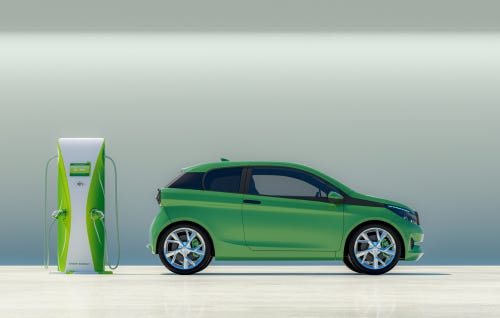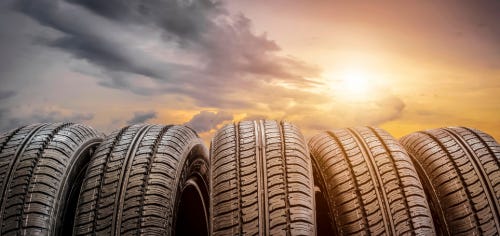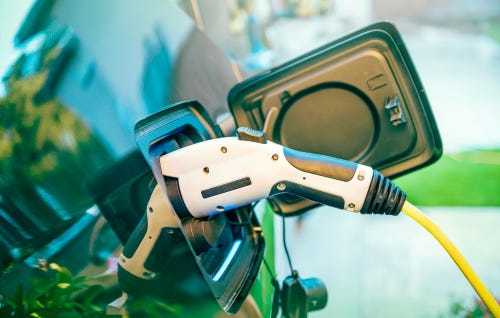If you’re in the market for a new car, you’ve probably looked at the various options for powering those vehicles: gas-burning, hybrid, plug-in hybrid, or fully electric. We will all end up with fully electric cars at some point, but when is the best time to make the switch? I’ve been driving an EV for 18 months; here are my thoughts.
Clean, quiet, and cheap to charge
I love my car. It’s quiet, the ride is incredibly smooth, and the acceleration far surpasses any other car I’ve driven. In winter, it warms up before I’ve left the neighborhood. Exhaust doesn’t stink up the garage. If I’m stuck in traffic or sitting in a drive-thru line, I’m not releasing pollutants that can generate smog or harm someone’s health. While I’m driving, I’m not releasing greenhouse gases that contribute to climate change.
That last piece is huge—transportation contributes 29% of U.S. greenhouse gas emissions.1 That’s more than any other sector. If we can reduce emissions associated with transportation, we can put a big dent in our nation’s contribution to climate change and help keep warming in check.
One more thing I love: The cost of charging is low compared to gasoline—at least when I charge at home. It typically costs me about $4 to charge up my car’s battery. I can plug it in in the evening and it’s ready to go the next morning with about 200 miles of range.
Not emissions- or pollution-free
EVs do have a carbon footprint. Greenhouse gases are produced during manufacturing, and most electric grids rely at least partially on fossil fuels to generate electricity. Some people argue this makes EVs just as problematic as gas-powered cars.
They also argue that EVs are more polluting than traditional vehicles, since their heavy weight may produce more tire particulates. Particulate pollution is an issue, but tire wear can be reduced by good driving habits (not using that super-fast acceleration, for example), and the regenerative breaking used by EVs produces less particulate matter from brake wear than gas-powered vehicles release.2
Overall EVs pollute far less than gas-powered cars (which produce particulate pollution in addition to their tailpipe emissions). Those “dirty EV” arguments are sleight of hand designed to prop up the fossil fuel industry.
Greenhouse gases are produced during manufacturing of all vehicles, which negates that piece of the equation. But do pay attention to the source of electricity where you live. If electricity is almost entirely from burning fossil fuels, your EV is indirectly contributing to their production. The good news is that most power companies are actively increasing the percentage of their grids that comes from renewables. Global energy production just hit 30% from renewables and is growing faster every day.3
Range anxiety is real
The biggest transition, for me, was shifting from thinking about how much gas I had left in the tank to how many miles I had left on a charge. I pay more attention to my total range than the percent battery remaining, and that range varies depending on conditions. When it’s cold or hot out, a huge amount of battery power goes into maintaining the temperature inside the car, which drastically reduces my range (this is more of an issue in the cold than the heat). When I drive in town, with lots of stopping, braking regenerates the battery, which increases the range. I sometimes return home with more miles remaining on a charge than the car had when I left.
But as I recently learned, long-distance can be an issue. Driving at highway speeds without braking causes the total range to plummet. My range in the city is about 200 miles; with highway driving, it topped out at 150. This was my first long-distance trip in the car, and I found it stressful, wondering if I had enough range to make it to the next charging station.
Which brings me to my next issue: Depending on where you live, charging stations can be few and far between. More are being added every day, so this won’t be a problem in the near future, but for now, you have to plan your trip around station locations and hope there’s a plug available when you get there. (Also: different cars have different plug types, which means you have to find a station with the right kind.)
Once you do plug in, charging takes a while. This depends on the car and the type of charging station and ranges from 20 minutes to an hour. High-speed chargers have the ability to deliver electrons quickly, but the car regulates that speed. I discovered that if my battery had more than 20% charge remaining, the car significantly slowed the charging speed, doubling the amount of time I had to wait. This turned an 8-hour drive into a 12-hour drive. (Lesson learned, I cut those four charging hours down to 2.5 on my return trip by not overcharging at each stop.)
My personal take on EVs: If you’re driving in town or to neighboring towns and can charge at home, I highly recommend them. If you do a lot of long-distance driving, it may not be the best option for you—yet.
EVs aren’t perfect. We’re in the midst of a major transition and transitions are messy. But it’s okay to buy, use, or do something that’s less than perfect. Adopting a new, imperfect option is far better than continuing business as usual, which has only gotten us into (literal) hot water.
If you like One Simple Thing, please forward to a friend who might be interested in taking steps toward a healthier planet!
EPA. Fast Facts on Transportation Greenhouse Gas Emissions. https://www.epa.gov/greenvehicles/fast-facts-transportation-greenhouse-gas-emissions
Jasper Jolly. Do electric ars have an air pollution problem? https://www.theguardian.com/business/2024/feb/26/electric-cars-air-pollution-problem-brakes-tyres
Isabella O’Malley. More and faster: Electricity from clean sources reaches 30% of global total. https://apnews.com/article/renewable-energy-climate-solar-wind-fossil-fuels-2718fce0ed37232dc25dbf46fff87955






I like the idea of an electric vehicle, but with my fondness for road trips, it would be more stressful than it’s worth at this point. Maybe in a few years when we’re in the market again they’ll be more efficient. My daughter has a hybrid and it’s very quiet and saves her a lot on fuel costs!